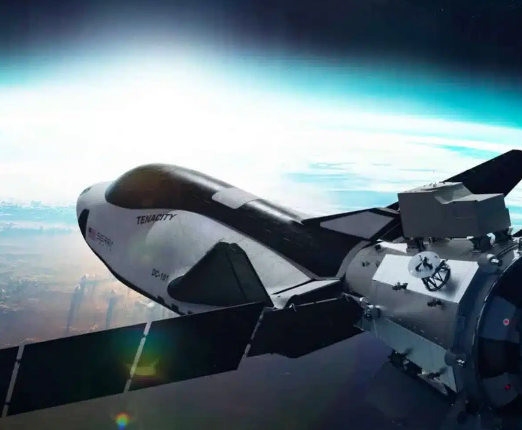A GROUNDBREAKING new sci-fi space plane is gearing up for orbit as it undergoes final tests.
NASA and Sierra Space’s Dream Chaser – the world’s only commercial spacecraft – is slated to head to the International Space Station in the first half of 2024.
It will take to the skies with a cargo module known as Shooting Star.
Tenacity – the first in the new fleet of Dream Chaser spaceplanes – has been dubbed the “uncrewed spiritual successor to the Space Shuttle”.
Unlike traditional ocean landings, the first-ever winged commercial spacecraft will be able to land on runways – just like the Space Shuttle did.
At 30ft long, it’s roughly a quarter of the length of the space shuttle orbiters – and can be reused up to 15 times.
Read more on NASA
It was picked by NASA to deliver, return and dispose of cargo for the International Space Station – carrying critical supplies like food, water, and science experiments.
Commercial space firm Sierra Space said it is “ushering in the next era of space exploration with its revolutionary fleet of Dream Chaser spaceplanes”.
Tenacity – the first of the Dream Chaser spaceplanes – will provide a minimum of seven cargo missions to and from the space station.
It was delivered to NASA’s Neil Armstrong Test Facility in Sandusky, Ohio for final testing in mid-December.
Most read in Tech
The space plane will be stacked on top of the Shooting Star cargo module and undergo rigorous environmental testing.
The test will recreate the extreme vibrations and conditions similar to those experienced during both launch and re-entry into Earth‘s atmosphere, NASA said.
The spacecraft will be carried by a ULA Vulcan Centaur rocket and is scheduled to launch from the Cape Canaveral Space Force Station in Florida.
The Dream Chaser spacecrafts will be engineered to be reused – and compatible with a variety of launch vehicles.
Sierra Space CEO Tom Vice said: “At Sierra Space, we are ushering in the next industrial revolution with a business and technology platform that provides our customers with a complete turn-key solution offering space as a service.
“Our platform includes Dream Chaser, a revolutionary, highly reusable commercial spaceplane with global runway access, and the first business-ready commercial space station.”
He said the design “will exponentially decrease the cost of product development and manufacturing in space”.
Dream Chaser can be customised for both domestic and international customers for global operation.
NASA said the Shooting Star cargo module is specifically designed to “support delivery and disposal of pressurised and unpressurised cargo to and from the space station”.
“The cargo module can be used only once and is disposed of prior to re-entry,” the space agency said.
The 15ft Shooting Star cargo attachment can deliver up to 5,000kg of cargo into orbit.
The spacecraft is scheduled to spend around 45 days at the space station on its first trip.
In readiness for Dream Chaser missions to the space station, multiple NASA astronaut crews have visited Sierra Space facilities for training, Sierra Space said.
A second Dream Chaser is already in production at the company’s manufacturing base in Colorado.
It comes after NASA successfully tested a new type of rocket engine that could one day get us to Mars quicker.
The engine – called the Rotating Detonation Rocket Engine (RDRE) – uses a new way of burning fuel to produce thrust.
Instead of burning fuel in a continuous stream, the RDRE detonates it in a series of explosions, as shown in a new video.
This is meant to create a more efficient and powerful burn – which could propel spacecraft to Mars in as little as four months.
Read more on The Sun
Typically, it takes current engines around six months to reach the Red Planet.














